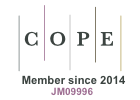Abstract
North Podlasie settlements have a character of environmental islands forming nodes of a network with varied strength of interactions. The expansion of alien species within settlement network is a function of time, isolation and size of the settlements; therefore, the differences in floras of the settlements are also dependent on their size and isolation. The above assumptions were tested on the basis of floristic data from 36 settlements of different size. The actual proportion of species representing various historical, geographical and ecological groups in local floras was compared to expected values obtained from regional pool of species and local species richness. As some of obtained results arę consistent with equilibrium hypothesis, other may be better explained by habitat diversity and passive sampling hypotheses. Ruderal floras of North Podlasie arę strongly unified. The bigger the settlements, the more similar their floras are. In the floras of the smallest settlements, archaeophytes arę overrepresented, while the proportion of kenophytes (neophytes sensu MEUSEL 1943) in local floras always corresponds to an expected value. Terophytes and species of American origin arę the most effective kenophytes in colonization of the smallest and most isolated towns and villages. Based on their features, anthropophytes of North Podlasie may be divided into three functional groups. Observed differences in a rate of colonisation of towns and villages by alien species enable prognosis of their further expansion.
Keywords
allien species; environmenlal islands; expansion; anthropophytes; ruderal flora; NE Poland






